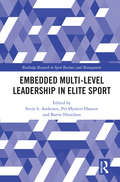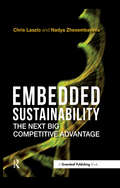- Table View
- List View
EmQuest: Travel Distribution in the Digital Era
by Gamze Yucaoglu Karim R. LakhaniEmQuest, Emirates Group's travel distribution company, must decide what to do with its contract with the global distribution system it uses, Sabre. Since its founding in 1988, EmQuest, was servicing travel agents in the MENA region by providing a connection to over 400 airlines as well as numerous other travel suppliers. EmQuest mainly relied on Sabre to provide this service to the agents, and its contract was coming to an end. In the last decade years, since the beginning of EmQuest's Sabre contract, while EmQuest grew, a lot happened in the travel industry: the Internet transformed customer habits, low-cost carriers emerged, and the Middle East experienced a boom in tourism. The conditions under which EmQuest had first signed its contract with Sabre a decade before were much different in 2017. With change happening so rapidly and impacting the fundamentals of the travel business model so dramatically, it was a real challenge to predict where the industry would be in the next decade. Yet the management needed to make a decision regarding the Sabre contract in 2017, amidst such a whirlwind in the market.
Emaar: The Center of Tomorrow, Today
by Esel Cekin Sid Yog Marc HomsyStarting in 1997, Mohammad Alabbar, Chairman of Emaar, has been largely associated with Dubai's most renowned real estate projects: the world's tallest building, largest mall and biggest fountain show. Emaar's pioneering success attracted a large number of private sector entrepreneurs as well as the Government of Dubai to follow in its footsteps. Consequently, land at prime locations in Dubai was not as readily available as it used to be. Emaar tried to venture outside of Dubai, but later faced challenges in choosing the right partners and maintaining control over management. Being 'stuck' between an overcrowded competitive landscape in Dubai and challenging conditions abroad, Alabbar wondered how he could maintain his company's growth while staying prepared for any upcoming financial downturn.
Email Marketing By the Numbers
by Chris Baggott Ali SalesPraise for EMAIL MARKETING by the NUM8ERS "At last-a book that marketers can use to gain real respect from CFOs and CEOs who care about the bottom line. Baggott, author of the award-winning blog 'Email Marketing Best Practices,' clearly explains how to make your campaigns perform measurably better. The secret's in your test results. " -Anne Holland, President, MarketingSherpa "Despite its proven power, email marketing receives a fraction of the attention given to other, fancier media. This week you'll probably hear far more about mobile videocasting (or some such fashion) than you will about email marketing. You can help correct this imbalance by reading this book. " -Rory Sutherland, Vice Chairman, Ogilvy Group, London, UK "Baggott's wonderful new direct marketing book is loaded with practical advice and recommendations from some of the best minds in the industry. Email Marketing by the Numbers should be read by everyone in the industry who wants to profit from acquiring and retaining customers. " -Arthur Middleton Hughes, Vice President/Solutions Architect, Knowledge Base Marketing, and author of Strategic Database Marketing "Amidst the confusion and changing landscape of the Web, Baggott is one of the clear thinkers who can cut through the hype and help you understand how to drive revenues through the use of marketing technology. " -Scott Burkey, Business Development Executive, Definition 6 "Baggott is the ultimate Web 2. 0 entrepreneur who takes Email 2. 0 to a new level. In Email Marketing by the Numbers, he gives marketers instructions for creating one-to-one conversations with prospects and customers. This book should be on the desk of every marketer in every company, big or small. " -Scott Maxwell, founder, OpenView Venture Partners
Email and Commercial Correspondence: A Guide to Professional English (Guides to Professional English)
by Adrian WallworkIf you write emails and letters as part of your work, then this book is for you. By applying the suggested guidelines, you will stand a much greater chance of getting the desired reply to your emails in the shortest time possible.Some of the key guidelines covered include:Write meaningful subject lines - otherwise recipients may not even open your mail.Always put the most important point in the first line - otherwise the reader may not read it.Be concise and only mention what is truly relevant. Write the minimum amount possible - you will also make fewer mistakes!Be a little too formal than too informal - you don’t want to offend anyone.If you have two long important things to say, say them in separate emails.Give clear instructions and reasonable deadlines.If you need people to cooperate with you, it is essential to highlight the benefits for them of cooperating with you.Empathize with your recipient's busy workload.Never translate typical phrases literally - learn equivalent phrases.The book concludes with a chapter of useful phrases. There is also a brief introduction for trainers on how to teach Business / Commercial English.
Email marketing: La guida imprenditoriale alla creazione di un business fiorente di email marketing
by Adidas WilsonIl mercato online è in continua evoluzione. Una tattica di marketing può essere efficace oggi e obsoleta domani. L'email, tuttavia, continua a superare tutti gli altri canali di marketing. Perché l'email è così potente? Cosa lo fa rimanere al potere? È facile trascurare l'email come canale di marketing. Potresti non trovarlo alla moda ed eccitante come Facebook, ma presenta vantaggi chiave rispetto ad altri canali. Dai un'occhiata ai dati demografici delle piattaforme di social media più popolari. Pinterest è usato soprattutto dal genere femminile, mentre Snapchat è per le giovani generazioni. D'altra parte, quasi tutti hanno un indirizzo email. Le persone che danno volentieri i loro indirizzi email, ovviamente si aspettano di ricevere email da te. La buona predisposizione dei tuoi abbonati aumenta notevolmente i tuoi tassi di conversione. Se Facebook va in blocco, perdi tutto il tuo seguito. L'email marketing ti consente di possedere i tuoi contatti. Usa i social media per aumentare la tua lista di email. La tecnologia di marketing automatizzato continua a migliorare costantemente ed è per questo che l'email marketing è così efficace. La possibilità di personalizzare l'esperienza di un cliente e inviare contenuti mirati ai consumatori genera più conversioni e vendite per le aziende. La personalizzazione della posta elettronica ha notevolmente contribuito all'aumento delle percentuali di apertura e di clic e la tecnologia di marketing ha reso il compito, altrimenti lungo e noioso, di personalizzare le email molto semplice.
Emancipating the Banking System and Developing Markets for Government Debt
by Maxwell FryMonetary policy in developing countries is largely based on a system introduced in the 1960s. Emancipating the Banking System and Developing Markets for Government Debt illustrates how this outdated system has led to financial repression and suggests some alternatives. Maxwell Fry is one of the leading experts in this area. His book will provide a
Emancipatory Feminism in the Time of Covid-19: Transformative resistance and social reproduction (Democratic Marxisms)
by Vishwas Satgar Christine Bischoff Jacklyn Cock Ruth Ntlokotse Hawzhin Azeez Asanda Benya Jane Cherry Samantha Hargreaves Inge Konik Jane Mbithi-Dikgol Courtney Morgan Sonia Phalatse Busi Sibeko Dineo SkosanaThe Covid-19 pandemic showed that a patriarchal capitalist socio-economic system is unable to address the socio-ecological reproduction need of societies. This volume foregrounds the possibilities emancipatory feminism creates by resisting neo-liberalism through grassroots and indigenous activism.The Covid-19 pandemic threw into stark relief the multi-dimensional threats created by neoliberal capitalism. Government measures to alleviate the crisis were largely inadequate, leaving women – in particular working-class women – to carry the increased burden of care work while at the same time placing themselves in direct risk as frontline workers.Emancipatory Feminism in the Time of Covid-19, the seventh volume in the Democratic Marxism series, explores how many subaltern women – working class, peasant and indigenous –challenge hegemonic neoliberal feminism through their resistance to ordinary capitalist practices and ecological extractivism. Contributors cover women’s responses in a wide range of contexts: from women leading the defence of Rojava – the Kurdish region of Syria, to approaches to anti-capitalist ecology and building food secure pathways in communities across Africa, to championing climate justice in mining affected communities and transforming gender divisions in mining labour practices in South Africa, to contesting macro-economic policies affecting the working conditions of nurses. Their practices demonstrate a feminist understanding of the current systemic crises of capitalism and patriarchal oppression. What is offered in this collection is a subaltern women’s grassroots resistance focused on advancing and enabling solidarity-based political projects, deepening democracy, building capacities and alliances to advance new feminist alternatives.
Emarketing Excellence: Planning and Optimizing your Digital Marketing
by Pr Smith Dave ChaffeyNow in its fourth edition, the hugely successful Emarketing Excellence is fully updated; keeping you in line with the changes in this dynamic and exciting field and helping you create effective and up-to-date customer-centric e-marketing plans. A practical guide to creating and executing e-marketing plans, it combines established approaches to marketing planning with the creative use of new e-models and e-tools. This new edition seamlessly integrates social media technology like Facebook check-in, social networking, tablets and mobile applications into the mix, demonstrating how these new ways to reach customers can be integrated into your marketing plans. It also includes brand new sections on online marketing legislation and QR codes, plus an expanded section on email marketing, the most commonly used e-marketing tool. Offering a highly structured and accessible guide to a critical and far-reaching subject, Emarketing Excellence 4e provides a vital reference point for all students of business or marketing and marketers and e-marketers involved in marketing strategy and implementation and who want a thorough yet practical grounding in e-marketing.
Embargoed Science
by Vincent KiernanThe popular notion of a lone scientist privately toiling long hours in a laboratory, striking upon a great discovery, and announcing it to the world is a romanticized fiction. Vincent Kiernan's Embargoed Science reveals the true process behind science news: an elite few scholarly journals control press coverage through a mechanism known as an embargo. The journals distribute advance copies of their articles to hundreds and sometimes thousands of journalists around the world, on the condition that journalists agree not to report their stories until a common time, several days later. When the embargo lifts, airwaves and newspaper pages are flooded with stories based on the journal's latest issue. In addition to divulging the realities behind this collusive practice, Kiernan offers an unprecedented exploration of the embargo's impact on public and academic knowledge of science and medical issues. He surveys twenty five daily U.S. newspapers and relates his in-depth interviews with reporters to examine the inner workings of the embargo and how it structures our understanding of news about science. Kiernan ultimately argues that this system fosters "pack journalism" and creates an unhealthy shield against journalistic competition. The result is the uncritical reporting of science and medical news according to the dictates of a few key sources.
Embarrassment of Product Choices 2: Towards a Society of Well-being
by Michel MillotProduct information is excessively commercial and technical. There is no single best product for all, and the price/quality ratio can be deceptive. Word of mouth is growing with opinions shared on the internet. This book calls for the reinvention of a new economy based on real requirements, not only for profit or “technology” but for qualities of use and the environment. A product’s use is its purpose. An innovation must always be an improvement to qualities of use. The emergence of new technologies, such as connected objects and the autonomous car, form a new trap for innovation, and progress has been limited to the perfection of technique. Marketing must no longer confuse the consumer (the customer) and the user. Complete with methodology for the reader to follow, this book describes how the ecology of use can become the main wealth of an economy based on quality of life and well-being.
Embassy To The Eastern Courts: America's Secret First Pivot Toward Asia, 1832-37
by Andrew C. JampolerIn the aftermath of the Napoleonic Wars, the U. S. found its merchants and traders locked out of their traditional markets in Europe and the Caribbean. Hoping for new and profitable American trade relationships, President Andrew Jackson dispatched an unemployed ship-owner and merchant with no diplomatic experience on a secret mission to negotiate with Eastern potentates in their courts. Edmund Roberts’ mission was to formalize American trade with these exotic places--Oman, Siam, Cochin China, and Japan--on a most favored nation basis, allowing for American consuls to openly advance and protect American interests and citizens in their host country. After sailing almost 70,000 miles in five years in the ill-fated USS Peacock, Roberts was successful in negotiating treaties with Oman and Siam, but he failed in Cochin China, and he died before setting sail to Japan. Peacock, first flagship of the Navy’s new East Indies Squadron, forerunner of the U. S. Seventh Fleet, outlived him by only a few years.
Embed Analytics in Business Processes: A How-To Guide
by Thomas H. Davenport Jeanne G. Harris Robert MorisonIf you really want to put analytics to work in your organization, you need to make them an integral part of everyday business decisions and business processes. A cross-functional process perspective enables you to appreciate how different parts of the business work together (or fail miserably in doing so) and to identify all the ways analytics might be used to create a better outcome for the enterprise. In this chapter, the authors of Competing on Analytics guide you through embedding analytics into every aspect of your business. They outline the ideal characteristics of analytically enabled business processes, the three fundamental approaches to determining how automated your analytically enabled decisions should be, IT's role in embedding analytics into business processes, and how to overcome sticking points to embedding analytics in your company's day-to-day operations. This chapter was originally published as Chapter 7 of Analytics at Work: Smarter Decisions, Better Results.
Embedded Analytics: Integrating Analysis with the Business Workflow
by Donald Farmer Jim HorburyOver the past 10 years, data analytics and data visualization have become essential components of an enterprise information strategy. And yet, the adoption of data analytics has remained remarkably static, reaching no more than 30% of potential users. This book explores the most important techniques for taking that adoption further: embedding analytics into the workflow of our everyday operations.Authors Donald Farmer and Jim Horbury show business users how to improve decision making without becoming analytics specialists. You'll explore different techniques for exchanging data, insights, and events between analytics platforms and hosting applications. You'll also examine issues including data governance and regulatory compliance and learn best practices for deploying and managing embedded analytics at scale.Learn how data analytics improves business decision making and performanceExplore advantages and disadvantages of different embedded analytics platformsDevelop a strategy for embedded analytics in an organization or productDefine the architecture of an embedded solutionSelect vendors, platforms, and tools to implement your architecture Hire or train developers and architects to build the embedded solutions you needUnderstand how embedded analytics interacts with traditional analytics
Embedded Autonomy: Financing a Resilient Local Government Effectively
by Andrew Walker Kevin Muldoon-Smith Mark Sandford Greg StrideThis book addresses the sustained failure to properly fund local government in England. While there has been plenty of rhetoric and policy initiatives around devolution of power to local authorities in recent decades, continuing recently with the English Devolution Bill, there has been far less attention paid to how these endeavours will be practically delivered and, most importantly, funded. In this context, the motivation in this book is to consider how local government in England could be funded differently. How can the continual hand to mouth existence of local authorities, and those that work to support them, be improved? Drawing on a system-based analysis of international local government practice, the authors develop a new theory of embedded autonomy to help understand and frame how local government can be funded effectively in England.
Embedded Autonomy: States and Industrial Transformation
by Peter B. EvansIn recent years, debate on the state's economic role has too often devolved into diatribes against intervention. Peter Evans questions such simplistic views, offering a new vision of why state involvement works in some cases and produces disasters in others. To illustrate, he looks at how state agencies, local entrepreneurs, and transnational corporations shaped the emergence of computer industries in Brazil, India, and Korea during the seventies and eighties. Evans starts with the idea that states vary in the way they are organized and tied to society. In some nations, like Zaire, the state is predatory, ruthlessly extracting and providing nothing of value in return. In others, like Korea, it is developmental, promoting industrial transformation. In still others, like Brazil and India, it is in between, sometimes helping, sometimes hindering. Evans's years of comparative research on the successes and failures of state involvement in the process of industrialization have here been crafted into a persuasive and entertaining work, which demonstrates that successful state action requires an understanding of its own limits, a realistic relationship to the global economy, and the combination of coherent internal organization and close links to society that Evans called "embedded autonomy."
Embedded Finance: Innovative Geschäftsmodelle und strategische Perspektiven
by Silke FinkenDieses Buch gibt einen Überblick über Treiber und Hintergründe der Entwicklung von Embedded Finance und zeigt konkrete strategische Perspektiven speziell für Finanzdienstleistungsunternehmen und ihre Firmenkunden auf sowie alle Unternehmen, die von der Integration von Finanzdienstleistungen in ihre Customer Journeys profitieren können. Die Integration von Finanzdienstleistungen wie Zahlungen, Finanzierungen und Versicherungen in die Produkte und Angebote von Unternehmen und Lifestyle-Apps wird immer mehr zur Normalität. Getrieben wird dies durch ein Zusammenspiel von technologischen Entwicklungen, Veränderungen von Kundenerwartungen und -verhalten und regulatorischen Initiativen. Für Unternehmen eröffnet Embedded Finance die Möglichkeit, durch eine nahtlosere Integration von Finanzdienstleistungen ihre Customer Journeys zu optimieren. Für Finanzdienstleister ergeben sich Chancen zu einer intensiveren Entwicklung von neuen Angeboten gemeinsam mit ihren Kunden. Andererseits entstehen auch signifikante geschäftspolitische Herausforderungen, die eine strategische Gesamtperspektive auf das Thema erfordern.
Embedded Finance: When Payments Become An Experience
by Scarlett Sieber Sophie GuibaudEmbedded finance is here and having global impact. Are you ready for it? In Embedded Finance: When Payments Become An Experience, veteran growth strategists, entrepreneurs, and fintech disruptors Scarlett Sieber and Sophie Guibaud deliver a thought-provoking and page-turning discussion on the most impactful and exciting trend of fintech yet: embedded finance. In the book, you’ll explore the past, present, and future of fintech, from how embedded finance is being leveraged today by industry heavyweights like Google and Amazon to supercharge their customers’ experience to the offerings of smaller, niche players who stand poised to dominate their own corners of the market as their answer unmet customers’ needs. The authors present: ● Practical examples around the world of how embedded finance is being used today by technology companies and brands to redefine our online and offline retail experiences as we know them ● The key trends, players, and technologies that are paving the way for embedded finance to take a dominant position in our lives ● The role, opportunities, and strategies for banks, technology companies and brands, providing them with all necessary tools to define their own embedded finance strategy ● The impact of embedded finance on society, consumers, companies, and the economy as a whole, highlighting the dominant force that is embedded finance for our future ● An exciting view of how our day-to-day lives will look like in 2030, powered by embedded finance An indispensable and eye-opening exploration of one of the most exciting and influential technologies in development today, Embedded Finance details a revolution in financial services, banking, and technology that has already begun. Are you ready?
Embedded Multi-Level Leadership in Elite Sport (Routledge Research in Sport Business and Management)
by Barrie Houlihan Svein S. Andersen Per Øystein HansenThis book represents an alternative perspective on international elite sport systems. It focusses on the embedded multi-level nature of leadership, and the scope that this might give for degrees of leadership autonomy and discretion. The chapters show how mechanisms of leadership on different levels interact. The nature and mix of leadership mechanisms reflect values and expectations related to specific political, normative and commercial sport contexts. Three introductory chapters outline key elements of these dimensions of elite sport contexts. Seven empirical cases illustrate how national contexts facilitate and constrain leadership practices, related to specific sports across Russia, China, Ghana, Germany, Switzerland, Denmark, Norway and the US. The final chapter discusses embedded multi-level leadership from a comparative perspective. Based on the countries covered, the book distinguishes between three groups: state-dominated systems, state-elite sport partnership and countries with a passive state, with no state intervention. This book is important reading for researchers and students with an interest in sport management, sport development, sport policy and sport governance, as well as for policy-makers, performance directors and managers working in elite sport.
Embedded Politics: Industrial Networks and Institutional Change in Postcommunism
by Gerald A. McdermottEmbedded Politics offers a unique framework for analyzing the impact of past industrial networks on the way postcommunist societies build new institutions to govern the restructuring of their economies. Drawing on a detailed analysis of communist Czechoslovakia and contemporary Czech industries and banks, Gerald A. McDermott argues that restructuring is best advanced through the creation of deliberative or participatory forms of governance that encourages public and private actors to share information and take risks. Further, he contends that institutional and organizational changes are intertwined and that experimental processes are shaped by how governments delegate power to local public and private actors and monitor them. Using comparative case analysis of several manufacturing sectors, Embedded Politics accounts for change and continuity in the formation of new economic governance institutions in the Czech Republic. It analytically links the macropolitics of state policy with the micropolitics of industrial restructuring. Thus the book advances an alternative approach for the comparative study of institutional change and industrial adjustment. As a historical and contemporary analysis of Czech firms and public institutions, this book will command the attention of students of postcommunist reforms, privatization, and political-economic transitions in general. But also given its interdisciplinary approach and detailed empirical analysis of policy-making and firm behavior, Embedded Politics is a must read for scholars of politics, economics, sociology, political economy, business organization, and public policy.
Embedded Sustainability: The Next Big Competitive Advantage
by Nadya Zhexembayeva Chris LaszloCompanies know how to meet the demands of shareholder value: years of managerial excellence testify to this achievement. Many also know how to create stakeholder value – through traditional approaches such as CSR and philanthropy which predictably lead to trade-offs and added costs. What remains elusive is discovering is how to meet both shareholder and stakeholder requirements in the core business – without mediocrity and without compromise – creating value for the company that cannot be disentangled from the value it creates for society and the environment. What if sustainability was embedded into the DNA of your organization? How can you incorporate environmental, health and social value into its very core? Many companies, despite their best intentions, "bolt on" sustainability as an afterthought to their core strategies. They trumpet green initiatives and social philanthropy which lie at the margins of the business, with symbolic wins that inadvertently highlight the unsustainability of the rest of their activities. Today's ecological and social pressures require a different business response – one that existing strategy frameworks fail adequately to address. In Embedded Sustainability, authors Chris Laszlo and Nadya Zhexembayeva explain and predict how companies can better leverage global challenges for enduring profit and sustained growth. They introduce the marquis concept of embedded sustainability: the incorporation of environmental, health, and social value into the heartbeat of the product life-cycle with no trade-off in price or quality – no social or green premium. This book helps readers to comprehend and implement the notion of embedded sustainability. At its best, embedded sustainability is invisible, similar to quality. In addition to delivering socially and environmentally conscious products for consumers, it is capable of considerably motivating employees. Most of all, it enables smart companies to create even more value for both their shareholders and stakeholders.
Embedding Artificial Intelligence into ERP Software: A Conceptual View on Business AI with Examples from SAP S/4HANA
by Siar SarferazThis book explains how to embed artificial intelligence in digitized business processes of ERP software by solving the two related substantial challenges: how can artificial intelligence be systematically integrated into ERP business processes for ease of consumption, and how can artificial intelligence be made enterprise-ready by covering ERP qualities like compliance, lifecycle management, extensibility, or scalability? As a general introduction, the first part of this book takes the reader through a historical journey towards intelligent ERP systems. In addition, reference processes and a reference architecture for ERP systems are proposed which build the foundation for the suggested subsequent solution concept, including a method for operationalizing intelligence for ERP business processes. Subsequently, in the second part detailed concepts of embedding artificial intelligence into ERP software are proposed. In this context the suggested solution architecture is depicted, and specific topics are resolved like data integration, model validation, explainability, data protection and privacy, model degradation and performance. In the last part an implementation framework is suggested which enables the previously introduced concepts and harmonizes the development and operations of artificial intelligent ERP applications. This part concludes with case studies considering artificial intelligence scenarios of SAP S/4HANA in the areas of logistics, finance and sales which apply the defined solution approach and shows its real-world feasibility. This book is written for professionals who want to implement (as developers) or exploit (as business analysts or consultants) or consider/plan the implementation/exploitation (as managers) of artificial intelligence in business information systems.
Embedding CSR into Corporate Culture
by Diane L. SwansonEmbedding CSR into Corporate Culture demonstrates that a new frontier for corporate social responsibility is possible in theory and practice. The key idea - discovery leadership - enables corporate managers to deal effectively with problems, issues, and value clashes occurring at the corporation-society interface.
Embedding Culture and Quality for High Performing Organizations
by Norhayati Zakaria Flevy LasradoEmbedding Culture and Quality for High Performing Organizations (978-1-138-48338-5, K349105) Shelving Guide: The aim of this book is to bridge two different core disciplines: quality management and cross-cultural management, based on how multinational corporations work, and how culture determines individual practices and values. Understanding these previously separate fields is essential to keeping multinational cultures innovative and sustainable. The authors’ research blends corporate and cultural perspectives to promote quality management practices that build organizational excellence. Whereas most books currently on the market are based on corporate culture and quality management, this book uniquely considers cross-cultural impacts on organizational effectiveness and global human resource management. This book provides opportunities for business practitioners and researchers to learn practices that are effective in building sustainable organizational excellence. It offers a practice guide to building a quality management program that emphasizes culturally-diverse work environments, cross-cultural management, and organizational excellence.
Embedding Resilience in the Built Environment Using the EU Taxonomy
by Elzbieta RynskaTaxonomy is the common name for an EU regulation that supports companies in sustainable environmental and climate action (Regulation [EU] No. 2020/852). It is a classification tool designed for investors, companies, and financial institutions to define the environmental impact of business activities and the requirements that organisations must meet to be considered as sustainable.The aim of this book is to examine the EU taxonomy from the built environment perspective and the ways in which it can be used to build resilience in real estate. It presents the issues, hot points, and possible choices from the designers, construction consultants, and investing bodies' points of view, those who must set forth initial conditions, which should later become the keystones for greener developments. It brings together the expertise of a unique team of both researchers and professionals and presents a methodology, case studies, and solutions which together comprise a novel understanding of the taxonomy’s influence on the pre-construction phase. The book:• describes the role of the built environment within sustainable development and how real estate can be used to build resilience with the use of taxonomy.• describes the characteristics of resilient environmentally friendly cities in the future.• proposes a roadmap to demonstrate urban policies that promote decarbonisation; and•enables investors to compare their products, operations, and strategies in terms of sustainability.Overall, this book is essential reading for decision-makers in the public and private sectors, urban developers, space and spatial designers, architects, planners, community stakeholders, and real estate investors.Chapter 1 of this book is freely available as a downloadable Open Access PDF at http://www.taylorfrancis.com under a Creative Commons Attribution-Non Commercial-No Derivatives (CC-BY-NC-ND) 4.0 license.
Embedding Space in African Society: The United Nations Sustainable Development Goals 2030 Supported by Space Applications (Southern Space Studies)
by Annette FroehlichThis book provides a detailed insight into how space and its applications are embedded, and can be further embedded, into African society in support of the SDGs, while taking into account the specific features, needs, and diversity of that society.Contributions drawn from across the continent and further afield provide analyses of the particular social situations in a variety of different African countries and regions, and highlight areas where space applications support the SDGs, and where they can further do so. The chapters cover a wide array of relevant and timely topics including basic needs like water quality, education, and capacity building, as well as financial, security, and legal aspects, together with facets of space technologies and infrastructure in Africa. Embedding Space in African Society will be of great interest to students and professionals in sustainable development, governance, and space studies.






















